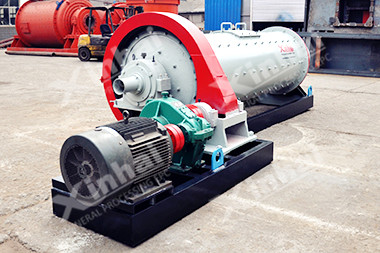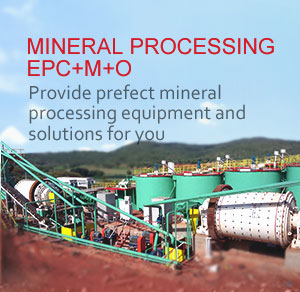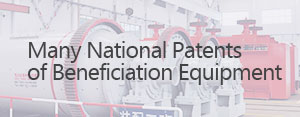- Home
- About
-
Mineral Processing EPC+M+O

Providing optimized solutions for your mine, one-stop service for mineral processing plant!
View details -
Product
- Grinding
- Classifying
Grinding & Classifying
- Flotation
- Gravity Separation Equipment
- Magnetic Equipment
- Gold Extraction Equipment
- Washing Equipment
Separating Process
- Thickening
- Dewatering Machine
Thickening & Dewatering
- Accessories
- Auxiliary Product
Consumables

Xinhai mineral processing equipment mainly include: grinding equipment, flotation equipment, dewatering equipment, magnetic separation equipment, and so on. Some of the equipment is Xinhai independent research and development, and has been awarded national patent. View details
-
Solutions
- Gold Tailings
- Tailings
Tailings

Gold CIP Production Line adsorbs gold from cyaniding pulp by active carbon including 7 steps: leaching pulp preparation, cyaniding leaching, carbon adsorption, gold loaded carbon desorption, pregnant solution electrodeposit, carbon acid regeneration, leaching pulp. View details
- Case
-
News
- Contact
Unlock the Secrets: How to Process Gold Ore
2025-02-13 XinHai Views (314)As a precious natural resource, gold mines have always attracted much attention and are the raw materials for extracting high-value metallic gold. How to process gold ore, gold ore processing method.
Types and components of gold mines
Common types of gold mines include: quartz vein gold mines, where gold is mostly stored in quartz veins formed in the earth's crust for a long time; sulfide-rich gold mines, which contain a large amount of sulfide minerals and gold, and gold is dispersed in them, making extraction difficult; placer gold mines, which are formed by the deposition of gold particles in riverbeds and other places, and gold is in small ore blocks or flakes.
The main component of gold mines is gold, but most of them are impure, often accompanied by quartz, sulfide minerals, etc. Quartz accounts for a large proportion of quartz vein gold mines, and sulfide minerals such as pyrite are common in sulfide-rich gold mines, and also contain trace elements such as silver and mercury.
Steps of gold mine processing
Crushing and grinding
The mined gold ore is too large to be directly extracted, and needs to be crushed and ground to reduce the particle size and increase the surface area.
Crushing: First, use a jaw crusher with a simple structure and high crushing ratio for coarse crushing, and the fixed jaw plate and the movable jaw plate move relative to each other to squeeze the ore. After coarse crushing, use a cone crusher for secondary or even tertiary crushing, and further refine the ore through the principle of extrusion and bending.
Grinding: The crushed ore enters the ball mill. The ball mill is a large rotating cylinder with steel balls inside. When rotating, the steel balls are lifted and then fall, impacting and grinding the ore into fine powder, and entering the beneficiation stage.
Ore dressing method
Flotation: Applicable to sulfide-rich gold ores. The ground ore is mixed with water to form a slurry, and a variety of flotation agents are added. Collectors (such as xanthate) selectively adsorb on the surface of gold-containing sulfide minerals to make them hydrophobic, and foaming agents (such as pine oil) form stable foam on the surface of the slurry. After air is introduced, the hydrophobic gold-containing sulfide minerals attached to the bubbles are scraped and collected as the foam rises, and useless minerals such as gangue are left in the slurry and removed.
Gravity separation: Separation based on the density difference of different minerals. Gold density is about 19.3g/cm³, much higher than most gangue minerals. A shaking table is commonly used, and the slurry is transported to the inclined shaking table surface with special grooves, while applying lateral water flow and longitudinal reciprocating differential. Under the action of water flow and mechanical force, high-density gold is enriched in a specific area of the shaking table, and low-density gangue is washed away by the water flow. Gravity separation has low cost and small impact, and is suitable for processing coarse-grained gold ores.
Cyanide method: the most commonly used method for gold extraction. Gold in gold ore is dissolved with dilute sodium cyanide or potassium cyanide solution. The ore is first ground and then mixed with cyanide solution in a series of tanks, and air is continuously introduced to provide oxygen required for the reaction. After the gold is dissolved, the gold-containing solution is separated from the remaining solid tailings. Then the gold is recovered with activated carbon slurry (CIP). Activated carbon has a high affinity for gold-cyanide complexes. After adsorbing gold, hot alkaline cyanide solution is used to desorb gold from the activated carbon, and finally the gold is recovered from the desorption solution by electrolysis or other precipitation methods.
Advanced Processing Technology
Carbon-in-Pulp (CIP): After gold ore is crushed, ground and cyanide leached, the gold dissolved in the pulp exists in the form of gold-cyanide complex. In the carbon-in-pulp process, activated carbon is added directly to the pulp. The activated carbon has a high affinity for gold-cyanide complex and can adsorb gold to the surface, effectively separating gold from other components in the pulp. This method has high gold adsorption and recovery rates, is relatively simple to operate, and requires less skilled workers. It can process gold ores composed of a variety of complex minerals and is suitable for large-scale and small-scale mining operations.
Carbon-in-Pulp (CIL): Similar to CIP but with a different operating sequence. In CIL, activated carbon is added simultaneously with cyanide leaching of gold ore. When gold is dissolved by the cyanide solution, the activated carbon in the pulp immediately adsorbs the dissolved gold-cyanide complex. Its main advantage is that the processing time is shorter than CIP, and the simultaneous leaching and adsorption shortens the overall production cycle, reducing the amount of gold in the product and the risk of loss. In addition, CIL requires less equipment and no separate leaching and adsorption tanks are required, which reduces capital investment and reduces the processing plant footprint.
Gold Ore Beneficiation Methods: Unlocking the Value in Your Mine
Extracting gold efficiently is paramount, and Gold Ore Beneficiation Methods are crucial for separating that precious metal from the rock. Choosing the right method means understanding the ore's composition, gold particle size, and environmental factors. Companies like Shandong Xinhai Mining Technology & Equipment Inc. provide optimized solutions for gold processing.... [more]
Inspiration from Mali gold mine news: Gold Mining Management
The occurrence of the Mali gold mine accident has made us pay attention to the standardization and safety of mining and beneficiation operations. In the process of gold mining and beneficiation, the formal management and operation of the mine are of great importance. Let us briefly introduce the composition of mine management ... [more]
Related Article
- Gold Ore Beneficiation: Advancing Efficiency and Sustainability
- Gold Mining Equipment Costs: A Down-to-Earth Guide
- Gold Ore Gravity Separation Equipment
- Comprehensive Analysis of CIP in Gold Processing
- Affordable Gold Ore Processing Practical Guide for Growing Enterprises
- The Gold Processing Plant Cost
- Inspiration from Mali gold mine news: Gold Mining Management
- Gold Ore Beneficiation Methods: Unlocking the Value in Your Mine
- Gold Mining Process from Start to Finish
- Here are Reasons and Solution for Belt Deviation of Belt Conveyor!
Mineral Processing EPC
Solutions
CONTACT US
- Tel: 0086 15901320633
- Fax: 0086 10 59621207
- Email: mhxu@xinhaimining.net
© 2017 Shandong Xinhai Mining Technology & Equipment Inc. Technical Support: Beijing Xinhulian Technology Co., Ltd.
Factory Address: No. 188, Xinhai Street, Fushan high-tech industrial development district, Yantai, Shandong, China






